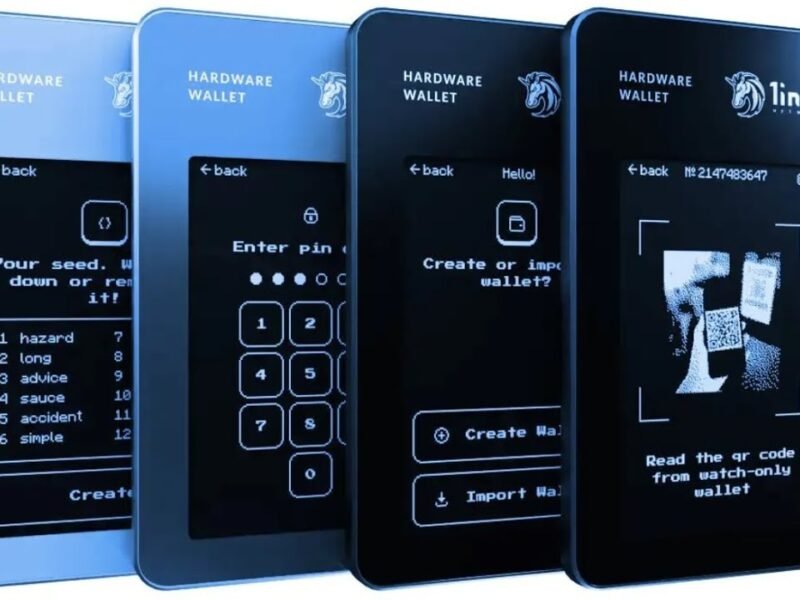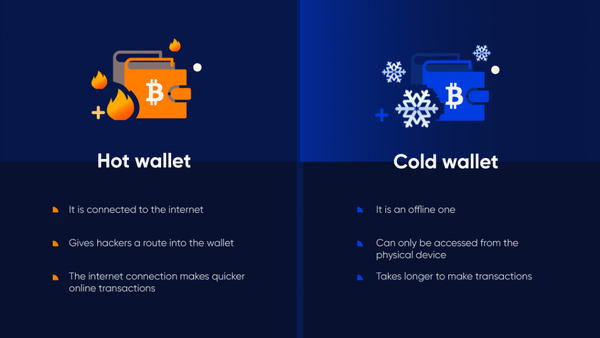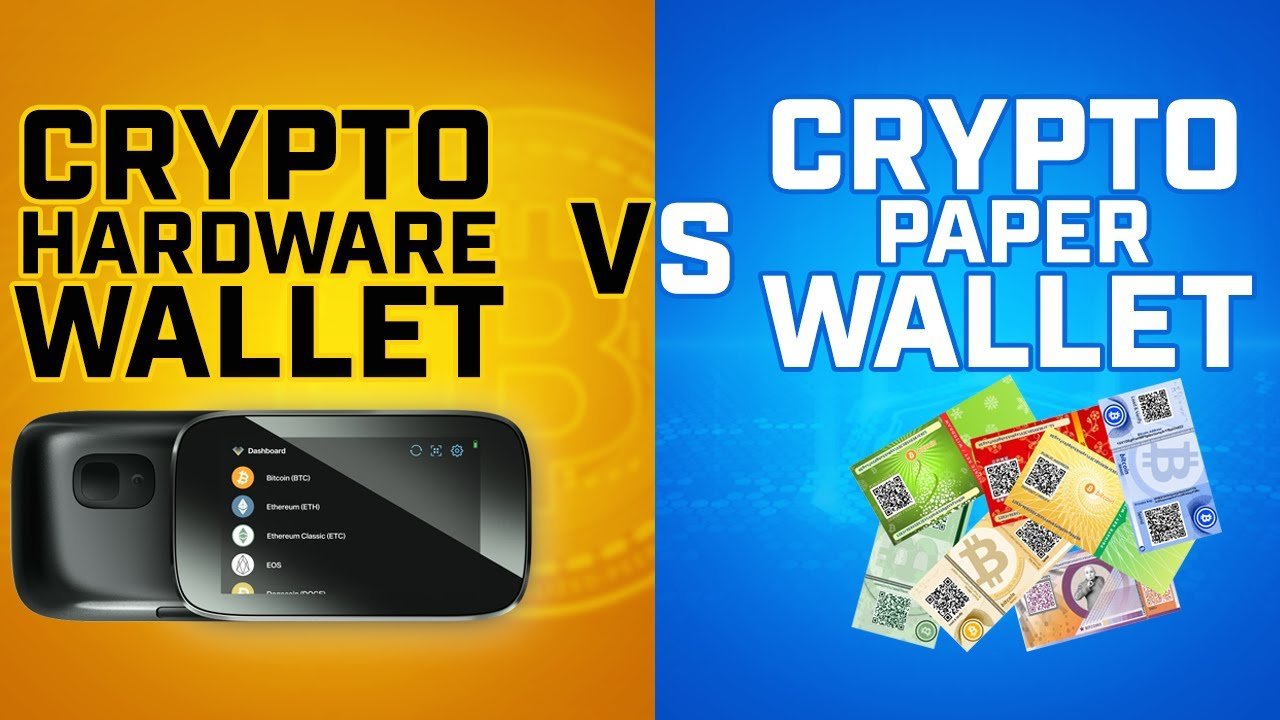Outline
- Cold Storage 101: Hardware Wallet vs. Paper Wallet—Which Is Safer in 2025
1.1 Introduction
• Why Self-Custody Still Matters in 2025
• How I Fell Down the Crypto Security Rabbit Hole - Cold Storage Basics
• Hot vs. Cold—A Quick Refresher
• What Counts as “Cold” Storage Today? - Anatomy of a Hardware Wallet
• How a Hardware Wallet Generates and Stores Keys
• Modern Security Chips and Firmware Updates
• Popular Hardware Wallet Brands in 2025 (Ledger, Trezor, BitBox, Keystone) - Dissecting the Paper Wallet
• How a Paper Wallet Is Created
• Common DIY Pitfalls (Printers, QR Codes, Ink Fade)
• Recovery and Backup Strategies - Security Showdown—Hardware Wallet vs. Paper Wallet
• Threat Model 1 – Online Hacks
• Threat Model 2 – Physical Theft
• Threat Model 3 – Fire, Flood, and the Zombie Apocalypse
• Human Error—The Silent Killer - Usability & Everyday Convenience
• Transaction Speed and Signing Flows
• Mobile-Friendly Workflows in 2025
• Multisig and Passphrase Tricks - Cost Comparison
• Up-Front Expense (Device vs. Printer)
• Hidden Long-Term Costs (Firmware, Reprints, Laminating) - Environmental Impact
• E-Waste vs. Paper Waste
• Sustainable Manufacturing Trends - Regulatory & Tax Considerations
• Proof-of-Funds in an Audit
• Traveling With Crypto in 2025 - My Personal Cold-Storage Playbook
• Why I Use a Hybrid Approach
• Disaster-Recovery Drills - Choosing What’s Safer for You
• Risk Tolerance Checklist
• Decision Matrix (Quick Quiz) - Conclusion
- FAQs
• Five unique questions and answers
Cold Storage 101: Hardware Wallet vs. Paper Wallet—Which Is Safer in 2025
Introduction
Why Self-Custody Still Matters in 2025
Another year, another exchange fiasco splashed across crypto Twitter. The lesson? “Not your keys, not your coins” is still gospel. That’s why I park the bulk of my long-term stack in cold storage, specifically a Hardware Wallet—or occasionally a low-tech paper wallet for redundancy.
How I Fell Down the Crypto Security Rabbit Hole
Back in 2017 I lost a modest bag of ETH to a phishing site. It stung, but it also sparked an obsession with bullet-proof storage. I’ve since tested every major Hardware Wallet, printed dozens of paper wallets, and even run fire-drills to time how fast I can recover my seed phrase. Call me paranoid, but in crypto land suspicion is a survival skill.
Cold Storage Basics
Hot vs. Cold—A Quick Refresher
Hot wallets touch the internet; cold wallets don’t. Simple, right? The colder your keys, the fewer attack vectors. A Hardware Wallet lives offline except for brief signing sessions. A paper wallet never goes online at all—unless you flash its QR code on a webcam, at which point it’s suddenly luke-warm.
What Counts as “Cold” Storage Today?
In 2025 “cold” encompasses:
- A commercially encrypted Hardware Wallet.
- A DIY paper wallet sealed in Mylar.
- An air-gapped smartphone flashed with a signing app.
The first dominates because it blends security with usability.
Anatomy of a Hardware Wallet
How a Hardware Wallet Generates and Stores Keys
Under the hood, a dedicated secure element spawns a 24-word seed entirely offline. Private keys never leak; only signed transactions exit via USB-C, NFC, or QR. Your laptop asks politely, “Sign this?” The Hardware Wallet blinks, crunches elliptic-curve math, and answers without spilling secrets.
Modern Security Chips and Firmware Updates
In 2025, most devices boast tamper-evident epoxy, dual-chip architectures, and open-source firmware. Ledger’s new Secure Element 6000 and Trezor’s ST33 microcontrollers both isolate critical operations. Pro tip: schedule firmware checks quarterly; outdated code is hacker catnip.
Popular Hardware Wallet Brands in 2025
- Ledger Stax – e-ink touch screen, Bluetooth, and NFT gallery.
- Trezor Safe 3 – open firmware, Shamir backups.
- BitBox02 – microSD backups, minimalist Swiss build.
- Keystone Pro – fully air-gapped, camera-based signing.
Each is a Hardware Wallet that balances security with day-to-day practicality.
Dissecting the Paper Wallet
How a Paper Wallet Is Created
Generate keys offline on a live-boot Linux USB, print the public and private keys (plus QR), then yank the printer’s Ethernet cable for good measure. Voilá—a wallet as old-school as parchment.
Common DIY Pitfalls
Ink fades, printers cache data, and cheap laminators introduce static that can smudge QR codes. Worse, many folks snap a “quick pic” for backup—instantly defeating the purpose of paper.
Recovery and Backup Strategies
Store duplicates in fireproof bags, safety-deposit boxes, or with trusted family. Never split private key halves across emails. And rehearse restoration; a paper wallet is useless if you panic-type the seed wrong during crunch time.
Security Showdown—Hardware Wallet vs. Paper Wallet
Threat Model 1 – Online Hacks
A Hardware Wallet signs offline, so phishing links can’t siphon keys. Paper wins too—until you photograph it for convenience. Edge: Hardware Wallet (thanks to built-in screens verifying addresses).
Threat Model 2 – Physical Theft
A thief pocketing your Hardware Wallet still needs the PIN. Snatch a paper wallet and the loot is ready for export. Edge: Hardware Wallet.
Threat Model 3 – Fire, Flood, and the Zombie Apocalypse
Silica-gel packs and steel seed plates protect both, but electronics fear heat. A laminated paper wallet might char, but a stainless-steel backup of your Hardware Wallet seed could survive. Edge: tie.
Human Error—The Silent Killer
Typos, lost sheets, forgotten passphrases. A modern Hardware Wallet offers on-device seed checks and passphrase hints. Paper offers…eraser crumbs. Edge: Hardware Wallet.
Usability & Everyday Convenience
Transaction Speed and Signing Flows
Need to DCA every Sunday? A Hardware Wallet signs in seconds. Scanning a paper QR with a webcam? Clunkier.
Mobile-Friendly Workflows in 2025
NFC signing lets me bump my phone to my Hardware Wallet while waiting for coffee. Paper can’t compete on the go.
Multisig and Passphrase Tricks
Multisig is now casual: one key on a Hardware Wallet, one in a vault, one on a second brand for redundancy. Paper multisig exists, but managing multiple sheets feels like origami hell.
Cost Comparison
Up-Front Expense
A decent Hardware Wallet costs ₦60,000–₦120,000 (~$70–$140). Paper is virtually free—printer ink aside.
Hidden Long-Term Costs
Firmware updates are free, but if you misplace your Hardware Wallet, replacement stings. Paper needs re-printing if ink degrades, plus lamination, Mylar, desiccants…those micro-costs add up.
Environmental Impact
E-Waste vs. Paper Waste
A Hardware Wallet is durable; one device can last a decade. Paper wallets encourage re-prints and disposable plastics. Ledger’s 2025 line uses recycled aluminum, nudging the eco balance toward silicon.
Sustainable Manufacturing Trends
Many Hardware Wallet makers now publish carbon audits and support device recycling. Paper’s footprint depends on your pulp source; sustainably harvested hemp paper narrows the gap.
Regulatory & Tax Considerations
Proof-of-Funds in an Audit
Tax offices increasingly request signed messages from your Hardware Wallet to verify ownership. Paper owners must sweep funds to a software wallet first—a taxable event.
Traveling With Crypto in 2025
Some jurisdictions treat a Hardware Wallet as a “monetary instrument.” Paper seeds scribbled in a notebook may slide under the radar—until X-ray officers inspect the QR code.
Read Also: The 7 Best Crypto Credit Cards With Cashback Rewards in Bitcoin
My Personal Cold-Storage Playbook
Why I Use a Hybrid Approach
I park 80 % of holdings on a Hardware Wallet, 15 % on a secondary brand for multisig, and 5 % as a paper wallet hidden off-site. Belt, suspenders, and a spare belt.
Disaster-Recovery Drills
Twice a year I restore my Hardware Wallet seed to a blank device, verify balances, then factory-reset. Paper backup? I hydrate the laminate with silica packs and check for ink bleed.
Choosing What’s Safer for You
Risk Tolerance Checklist
- Tech-savvy enough to navigate firmware?
- Comfortable memorizing PINs?
- Live in a humid climate that ruins paper?
If yes, a Hardware Wallet is your ally.
Decision Matrix (Quick Quiz)
| Scenario | Best Choice |
|---|---|
| You trade monthly | Hardware Wallets |
| You bury gold in the backyard | Paper wallet (laminated + steel backup) |
| You’re nomadic, no fixed address | Hardware Wallets |
| You distrust electronics entirely | Paper wallet |
Conclusion
In 2025 the scales tilt decisively toward the Hardware Wallets. It pairs fortress-grade security with day-to-day convenience, leaving the paper wallet as a niche tool for ultra-cold, set-and-forget storage. Whichever route you choose, remember: cold storage isn’t about perfection—it’s about stacking layers of defense until the cost of attack dwarfs the target. Stay safe, stay sovereign, and may your private keys remain forever yours.
FAQs
1. Can I store multiple cryptocurrencies on one Hardware Wallets?
Yes. Modern devices support thousands of coins and tokens via companion apps.
2. What happens if my Hardware Wallets manufacturer goes out of business?
Your 24-word seed is interoperable. Restore it on any BIP-39-compatible wallet.
3. Is a paper wallet ever safer than a Hardware Wallets?
Only if generated offline, stored in ideal conditions, and never scanned or photographed—few people meet those standards.
4. How often should I update my Hardware Wallets firmware?
Check quarterly or whenever the vendor announces a critical patch.
5. Do I need both a Hardware Wallets and a paper wallet?
Not mandatory, but using a paper wallet as an off-site backup of your Hardware Wallet seed adds an extra safety net.








